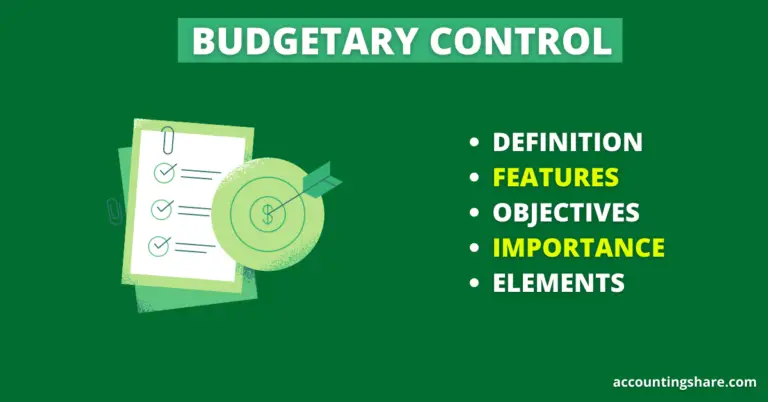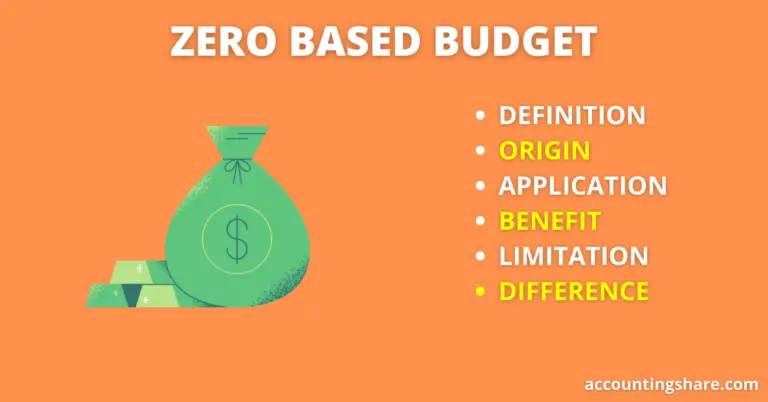Budget-Definition, Features, and Objectives [Notes with PDF]
What is Budget?
In a brief, the budget is the plan’s numerical publication.
A budget is a numerical representation of a company’s overall strategy. The term “budget” usually refers to the details of an organization’s possible future income and expenditure over a given time period.
In economic terms, a budget is a document that details all of a government’s economic functions and financial transactions for a specific time period, usually a year.
In addition to income and expenditure calculations, the state budget also includes sources of revenue, social welfare interpretation through expenditure, government fiscal policy, and so on.
A budget is a predetermined statement of management policy during a given period which gives a standard for comparison with the results actually achieved.
J.L Brown and L. Howard
In the modern era, budget refers to the calculation or estimation of expenditures on land, buildings, machinery, raw materials, capital, human resources, and other resources with the goal of maximizing profits, improving overall organizational efficiency, and achieving specific goals for the future activities.
What are the Top 6 features of Budget?
Analyzing budget definitions, the following top 6 features of budgets are observed:
1.Plan expressed in quantitative numerical and monetary terms:
Initially, budgets are prepared on the basis of different units or quantities, but eventually, they are expressed in financial terms.
For example, in the purchase budget, the quantity of raw material and the product produced in the production budget are shown in units, but in the budget, the overall form is given in financial terms, i.e. in terms of money.
2. Prepared for a specific time period in the future:
The budget is not prepared for the present or the past, rather it is prepared for a specific time period in the future. For example, Sales Budget, cash Budget, Production Budget, etc.
3. Prepared before the specific period:
The budget is prepared shortly before the beginning of the period for which it is being formed.
4. Prepared to achieve a predetermined goal and objective:
The budget is formulated to achieve a predetermined objective and goal.
5. Approved by Top management:
After formulating the budget, it has to be approved by the top management of the organization before implementing it.
6. Future revenue expenditure and resource allocation plan for the company:
The budget is considered as a guideline and a strategy for various types of action plans related to the income and expenditure of the organization concerned, acquisition and use of resources, etc.
What are the Top 7 Objectives of Budget?
A multi-purpose budget is formulated to efficiently manage the organization. The top 7 objectives of the budget are discussed below:
1.To set up the Objective and Goal of the institution:
One of the main objectives of budgeting is to set the objectives and goals of the organization and to provide a clear idea about it in the budget.
2. Establishment of the overall plan of the organization:
The organization has to formulate plans related to purchasing of raw materials, production, sale of manufactured goods, management of administrative activities, raising and investing of capital, cash management, inventory management, etc.
The budget pushes the business towards achieving specific goals through the numerical disclosure of all these action-oriented overall plans.
So the main purpose of the budget is to formulate an overall plan.
3. Coordinating all the departments and functions of the organization:
Different departments in the organization perform different tasks. The success of the organization depends on the coordination of the functions of these departments.
Production depends on the sale of manufactured goods and the need to purchase raw materials arises in the need of production.
Raw materials and labor are not required if production is stopped. Therefore, in order to run the organization successfully, it is very important to coordinate the various departments and functions of the organization through a budget.
4. Setting criteria for performance appraisal:
Criteria are pre-determined in the budget for actual performance appraisal. Differences are made by comparing the actual functions with these predetermined criteria.
Therefore, one of the objectives of the budget is to determine the criteria for performance appraisal, to determine the differences, to determine the causes of the differences, and to remedy them.
5. Increase sense of responsibility, awareness, and enthusiasm of the employees and officers of the organization:
One of the objectives of the budget is to increase the sense of responsibility, awareness, enthusiasm, and motivation of the employees and officers.
Responsibilities and powers are distributed among the employees through the budget.
Employees and officers who are empowered to perform certain duties and responsibilities spontaneously become aware of their responsibilities and take care of the responsibilities and duties assigned to them with enthusiasm and enthusiasm to achieve the goals of the organization.
6. Staff skills enhancement:
The budget sets the standard of work ethic and efficiency. Keeping in view the set criteria, the employees employed in the organization take care to perform their respective tasks so that the efficiency of the employees can be enhanced.
7. Miscellaneous purpose:
Apart from the above objectives and from an economic point of view, the following objectives of the budget are observed:
- Equitable distribution of resources.
- To increase investment.
- Increase the rate of return on investment.
- Achieve full employment.
- To achieve maximum development and social welfare.
Conclusion:
From the above discussion, we can say that the budget can be considered as a road map for the company’s future operations.
Before constructing a structure, the engineer creates an overall design that includes the doors and windows, size and shape, length-width, height, and a number of rooms, among other things.
Similarly, a commercial enterprise must first design itself, that is, devise production, sales, and management strategies. A budget is what this plan looks like when it’s written down in numbers.
You can also read:



